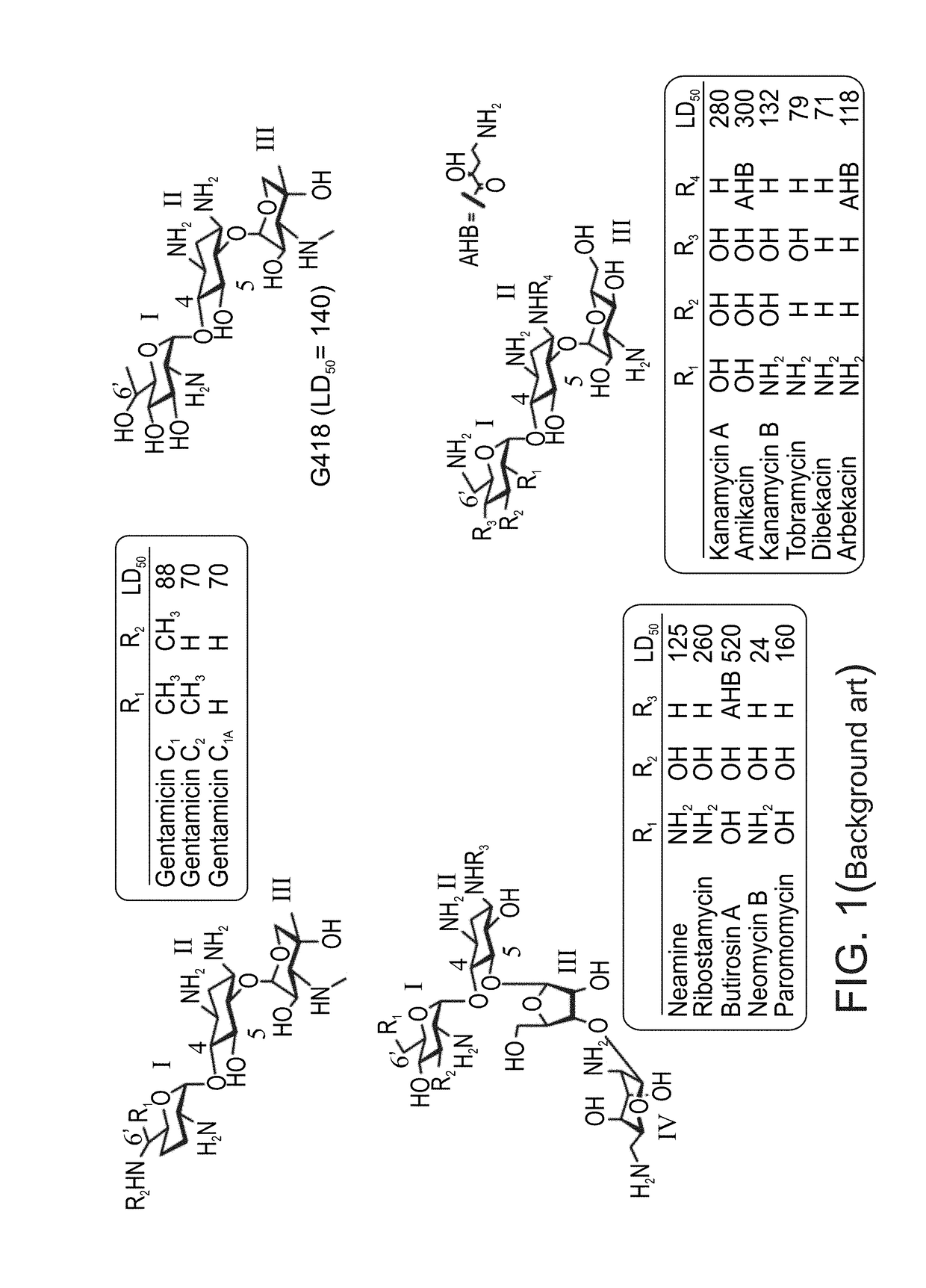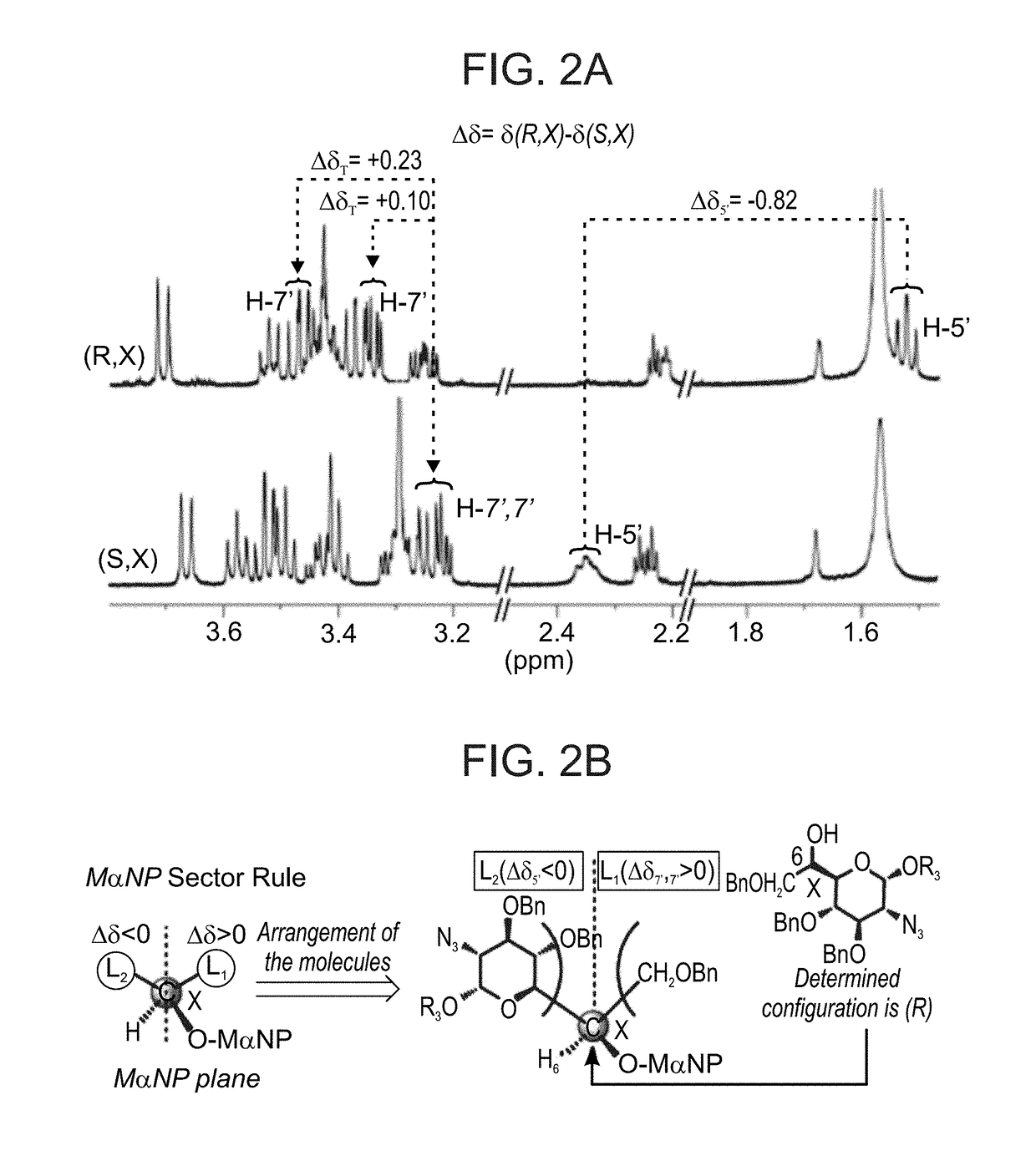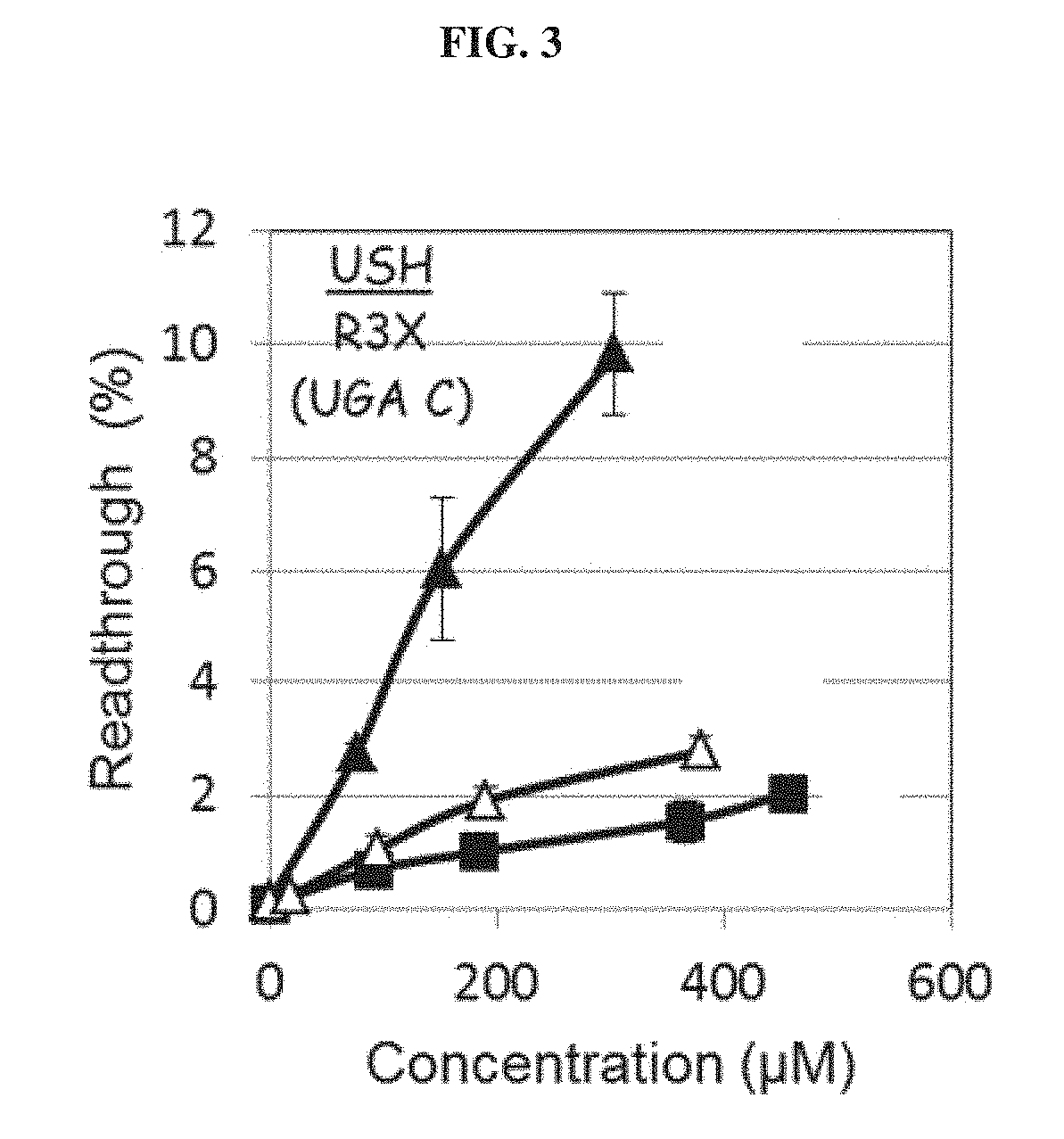Aminoglycoside derivatives and uses thereof in treating genetic disorders
- Summary
- Abstract
- Description
- Claims
- Application Information
AI Technical Summary
Benefits of technology
Problems solved by technology
Method used
Image
Examples
example 1
Chemical Syntheses of Exemplary Diol-Containing Aminoglycosides According to Some Embodiments of the Present Invention
[0524]General Techniques:
[0525]NMR spectra (including 1H, 13C, DEPT, 2D-COSY, 1D TOCSY, HMQC, HMBC) were routinely recorded on a Bruker Avance™ 500 spectrometer, and chemical shifts reported (in ppm) are relative to internal Me4Si (δ=0.0) with CDCl3 as the solvent, and to MeOD (δ=3.35) as the solvent. 13C NMR spectra were recorded on a Bruker Avance™ 500 spectrometer at 125.8 MHz, and the chemical shifts reported (in ppm) relative to the solvent signal for CDCl3 (δ=77.00), or to the solvent signal for MeOD (δ=49.0).
[0526]Mass spectra analyses were obtained either on a Bruker Daltonix Apex 3 mass spectrometer under electron spray ionization (ESI) or by a TSQ-70B mass spectrometer (Finnigan Mat).
[0527]Reactions were monitored by TLC on Silica Gel 60 F254 (0.25 mm, Merck), and spots were visualized by charring with a yellow solution containing (NH4)Mo7O24.4H2O (120 gram...
example 2
Activity Assays of Exemplary Compounds of Example 1
[0640]The experimental assay procedure and result analysis was carried out essentially as described hereinabove and in further detail hereinunder.
[0641]Materials and Methods:
[0642]In all biological tests, all the tested aminoglycosides were in their sulfate salt forms [Mw (gr / mol) of the sulfate salts were as follow: Compound 1-437.1, NB74—564.3, NB124—605.9, NB153—526.8, NB155—512.2, NB156—705.9, NB157—746.6, G418—692.7, gentamicin—653.2].
[0643]Dual Luciferase Readthrough Assays:
[0644]DNA fragments derived from PCDH15, CFTR, and IDUA cDNAs, including the tested nonsense mutation or the corresponding wild type (wt) codon, and four to six upstream and downstream flanking codons were created by annealing the following pairs of complementary oligonucleotides:
Usher Syndrome:p.R3Xmut / wt:5′-GATCCCAGAAGATGTTTT / CGACAGTTTTATCTCTGGACAGAGCT-3′and5′-CTGTCAGAGATAAAACTGTCA / GAAACATCTTCTG-3′;p.R245Xmut / wt:5′GATCCAAAATCTGAATGAGAGGT / CGAACCACCACCACCAC...
example 3
Unsaturated Glucosamine (Ring I)-Containing Exemplary Compounds According to Some Embodiments of the Present Invention
[0672]Exemplary new modifications of aminoglycoside structures were performed by inserting unsaturation at ring I (glucosamine ring). It has been assumed that by the deletion of C4′-OH or C3′,C4′-hydroxyls with a simultaneous introduction of unsaturation on Ring I makes the ring relatively “free” to move within the binding pocket for better pseudo-pair interaction with G1408 and improved 7t-7t stacking with A1491.
Chemical Syntheses
[0673]The following exemplary aminosugars Compounds NB154, NB158 and NB159 were synthesized:
[0674]All the structures were confirmed and characterized by a combination of various 1D and 2D NMR techniques, including 1D TOCSY, 2D COSY, 2D 1H-13C HMQC and HMBC along with mass spectrometry.
Synthesis of NB154
[0675]The synthesis of NB154 is depicted in Scheme 5 below.
[0676]Briefly, the synthesis started from paromamine, which is obtained from comm...
PUM
| Property | Measurement | Unit |
|---|---|---|
| Angle | aaaaa | aaaaa |
| Angle | aaaaa | aaaaa |
| Angle | aaaaa | aaaaa |
Abstract
Description
Claims
Application Information
 Login to View More
Login to View More - R&D
- Intellectual Property
- Life Sciences
- Materials
- Tech Scout
- Unparalleled Data Quality
- Higher Quality Content
- 60% Fewer Hallucinations
Browse by: Latest US Patents, China's latest patents, Technical Efficacy Thesaurus, Application Domain, Technology Topic, Popular Technical Reports.
© 2025 PatSnap. All rights reserved.Legal|Privacy policy|Modern Slavery Act Transparency Statement|Sitemap|About US| Contact US: help@patsnap.com



